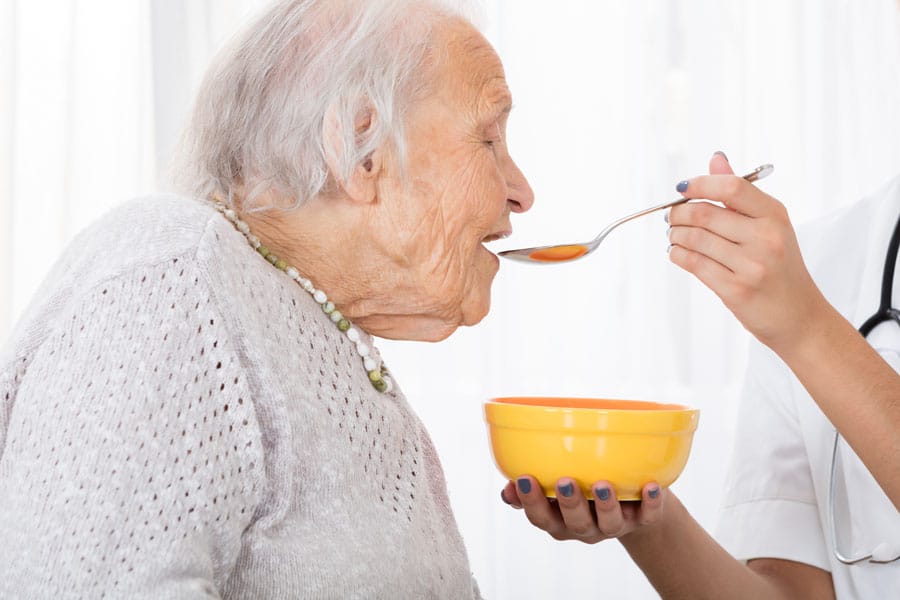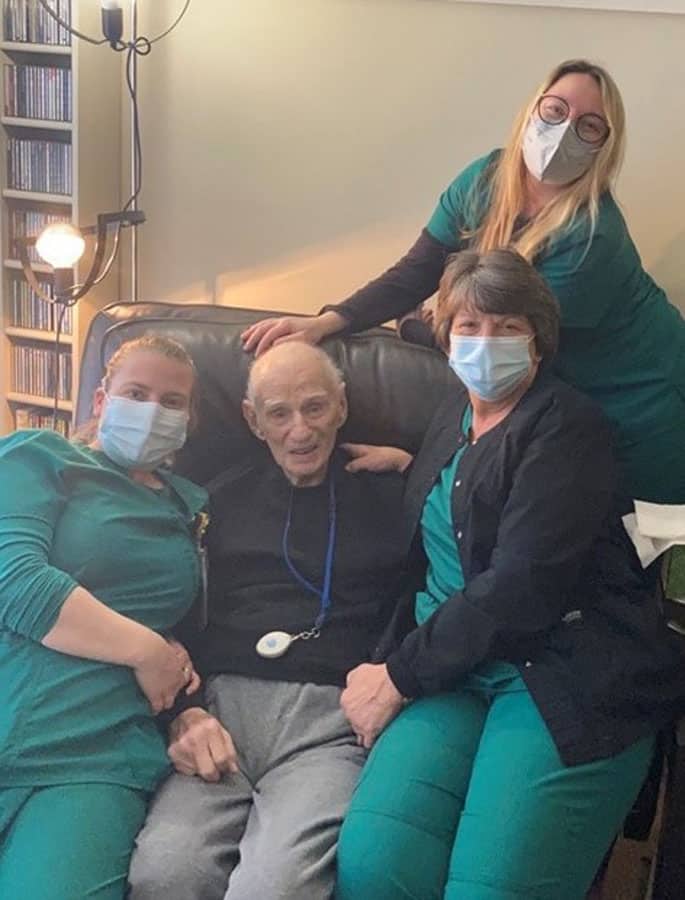Please view our updated COVID-19 guidelines and visiting procedures →.

Food is thought to be one of life’s greatest pleasures. Most of us equate food as a means to nurture and show love. To share a meal is to have a sense of togetherness. We know that nutrients from the food we consume are used to build muscle, provide energy, and most simply, enable all our bodies’ intricate processes to occur. For patients that are nearing the end of life, it is often hard to recognize and accept that the body does not require, nor can it utilize, the nutrients from food the way it once did.
End of life does not indicate a patient’s age or illness, but rather the nearing of the end of a patient’s life. This stage can be the result of a serious chronic illness, such as; heart disease, cancer, stroke, dementia, diabetes, or an accidental injury. Typically, when a patient is initially diagnosed with a serious chronic illness, the patient receives Palliative Care, which focuses on relief of symptoms and stress as a result of the serious illness. Dietary changes may be necessary, but food remains a major source of nutrition and health for the patient.
When a patient is known to be in the end of life stage, they most likely would be receiving hospice care. Hospice Care differs from Palliative Care in that life expectancy is six months or less. Some patients accept their terminal prognosis and begin receiving hospice care immediately, while others chose to continue pursuing a curative treatment. When hospice care does begin, the focus on food and nutrition changes dramatically.
Throughout life the body works hard to grow, build and repair, but the opposite happens at the end of life. The body focuses on transitioning to shutting the processes down, thus requiring less in the way of nutrition. When Connecticut Hospice starts providing hospice care to a patient, whether at its inpatient facility in Branford, in a patient’s home, be it a private residence or another facility, dietary support is an additional discipline that can be beneficial to both patients and family members.
Understandably, there are often many questions and concerns surrounding food and nutrition at the end of life. Concerns over the possibility of “starvation” or “dehydration” are quite common. Dietary care at the end of life can be confusing and unsettling to many. It is often hard for loved ones to recognize that certain conditions may not be “fixed’ or “cured” through good nutrition in a terminal illness. Meeting loved ones where they are on their journey and recognizing how appetite and the ability to eat may change can be an invaluable tool to have. Connecticut Hospice’s Dietary Support staff helps to educate families on these changes and assists in navigating the best way to support their loved ones.
Understandably these concerns can lead to a great deal of distress for the patient and family, and they often find themselves spending much of their limited time worrying, bargaining and at times arguing over food. It is helpful to know that patients at the very end of life do not experience hunger and thirst the way they once did.

At this stage, it is important to educate the family members and/or caregiver on the changes their loved one is going through nutritionally. The enormous amount of energy once needed to process and digest food is no longer required for terminally ill patients. Oftentimes these processes are already strained due to the body’s condition or diagnosis. Forcing foods and/or fluids into the system can produce added stress on the body systems. Nausea, vomiting, bloating, and abdominal discomfort are just a few symptoms that patients may experience when foods or fluids are forced at end of life.
“As hard as it may be, we encourage families to follow their loved one’s cues surrounding foods and fluids at the end of life,” says Connecticut Hospice’s Dietary Support Team member, Alycia Mulhern, RD.

By refusing to eat or drink, the patient is communicating that they are not feeling hunger or thirst and are more comfortable without it. The Dietary Support Team at Connecticut Hospice makes themselves available to answer questions from family members to help lessen fears and anxiety during an already stressful time.
It is the hope of the Dietary Support Team at Connecticut Hospice that by following these recommendations as a guide, it will allow families to spend precious time with loved ones without unnecessary pressure on food and eating. Sitting together holding hands, listening to music, reading a book, or watching a program together are all great ways to feel close and enjoy each other’s company.

In some cases, a patient who is not eating will still want to be part of a gathering that includes food. Recently, Connecticut Hospice held a 100th birthday party for a home care patient. He was smiling ear to ear and had no cake. It is all about meeting the patient where they are.
At the end of life, the goal for loved ones is to transition peacefully, and as comfortably as possible. This includes honoring patients’ preferences when it comes to foods and fluids. It also means trusting that they know their bodies and are doing what it takes to make their process and quality of life the most comfortable while they transition.

As a not-for-profit, we depend on generous donors to help us provide customized services and therapies that aren’t completely covered by Medicaid, Medicare, or private insurance.
Please make a gift to help us sustain the highest standard of care.
Admissions may be scheduled seven days a week.
Call our Centralized Intake Department: (203) 315-7540.